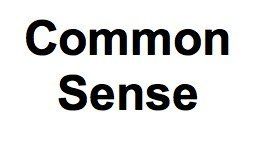Primary Election Wrap-up
Peter Heck & Tom Timberman • August 4, 2020

This year’s presidential contest began with the largest number ever of Democratic presidential candidates — 29, reduced quickly to 25. Seven stayed in the race until early April, when only former Vice President Joe Biden and Vermont Sen. Bernie Sanders remained. The latter withdrew shortly before the end of April, at which point Biden became the presumptive Democratic candidate, having won 1,991 delegates, the minimum required to clinch the nomination. As of August 3, Biden had 50.6 percent of the primary vote to 26.9 percent for Sanders and 7.98 percent for Sen. Elizabeth Warren. In the June 2 Maryland primary, Biden received 84 percent to 8 percent for Sanders and 3 percent for Warren. Other candidates were farther behind.
On the Republican side, incumbent President Donald Trump at one point had three primary challengers — none of whom was able to generate significant support. The last of the group, former Massachusetts Gov. William Weld, withdrew on March 18. (Even after dropping out, Weld received 13.08 percent of the primary vote in Maryland.) A few Republican state parties canceled their primaries. As of the end of July, Trump had almost 94 percent of the primary vote nationwide. The last primary is scheduled for August 11 in Connecticut.
With Trump and Biden having locked down their respective parties’ nominations, much of the interest in the remaining primary elections focuses on the down-ballot candidates. There were several intriguing contests in the late June primaries, especially in Kentucky, New York and Virginia – all of which voted on June 23.
One of the most closely-watched races was in Kentucky, where Democrats selected a candidate to oppose Sen. Mitch McConnell, majority leader in the Republican-held U.S. Senate. In an election that turned close in the final days, Amy McGrath squeezed out a win over Charles Booker, 45.4 percent to 42.6 percent. McGrath, a former Marine fighter pilot, was perceived as a sure thing until Booker, a state representative, emerged as a strong proponent of racial justice in the wake of the police killings of George Floyd in Minneapolis and Breonna Taylor in Louisville. Booker’s campaign was strengthened by endorsements by such national progressive figures as Sen. Bernie Sanders, Sen. Elizabeth Warren, and Rep. Alexandria Ocasio-Cortez. As for the general election in November, McGrath has to be considered an underdog against McConnell.
In New York, several progressive Democrats scored wins against establishment candidates in congressional races. Especially notable was the defeat of Rep. Eliot Engel, a 16-term incumbent and chair of the House Foreign Affairs Committee, by Jamaal Bowman, a middle-school principal from the Bronx. In another district, Mondaire Jones, a former attorney in Westchester County, won the Democratic race to succeed retiring Rep. Nita Lowrey. If elected, Jones would be the first openly gay Black congressman. And Ocasio-Cortez overcame establishment opposition to win the chance to run for a second term in Congress.
In the Virginia primaries, Cameron Webb, a 37-year-old Black physician, defeated Marine veteran Claire Russo for the Democratic nomination to oppose Republican Bob Good. While the district is perceived as Republican-leaning, Democrats see it as a pickup opportunity, especially if this year’s election generates a “Blue wave.”
One of the few Senate primary surprises occurred in Alabama’s Republican primary, July 14, where former Auburn football coach Tommy Tuberville beat former Senator and Attorney General Jeff Sessions. He will face Sen. Doug Jones, the incumbent Democrat, who was unopposed in the primary.
But on the national level, with both parties’ conventions drastically scaled down in response to the Covid-19 pandemic, the main bit of suspense has to do with Biden’s vice-presidential choice — an announcement expected before Aug. 17, when the Democrats hold their convention virtually.
Peter Heck is a Chestertown-based writer and editor, who spent 10 years at the Kent County News and three more with the Chestertown Spy. He is the author of 10 novels and co-author of four plays, a book reviewer for Asimov’s and Kirkus Reviews, and an incorrigible guitarist.
Tom Timberman is a lawyer, and former Foreign Service officer and economic development team leader/government adviser in war zones. He and his wife have lived in Kent County for 24 years.
Common Sense for the Eastern Shore

Sparking alarm among housing advocates, social workers, and residents, Salisbury Mayor Randy Taylor has announced plans to gut Salisbury’s nationally recognized Housing First program, signaling a break from years of bipartisan progress on homelessness. Created in 2017 under then-Mayor Jacob Day, the initiative was designed around a simple but powerful principle: that stable, permanent housing must come first before residents can address problems with employment, health, or recovery. The program was designed to provide supportive housing for Salisbury’s most vulnerable residents — a model backed by decades of national data showing it reduces homelessness, saves taxpayer dollars, and lowers strain on emergency services. But under Taylor’s leadership, that vision appears to be ending. In a letter to residents, the City of Salisbury announced that the Housing First program will be shut down in 2027, in effect dismantling one of the city’s long-term programs to prevent homelessness. Taylor says he plans to “rebrand” the program as a temporary “gateway to supportive housing,” shifting focus away from permanent stability and toward short-term turnover. “We’re trying to help more people with the same amount of dollars,” Taylor said. Critics call that reasoning deeply flawed, and dangerous. Former Mayor Jacob Day, who helped launch the initiative, says that Housing First was always intended to be permanent supportive housing, not a revolving door. National studies show that when cities replace permanent housing programs with short-term placements, people end up right back on the streets, and that costs taxpayers more in emergency medical care, policing, and crisis intervention. Local advocates warn that Taylor’s move will undo years of progress. “This isn’t just a policy shift, it’s a step backward,” one social service worker said. “Housing First works because it’s humane and cost-effective. This administration is turning it into a revolving door to nowhere.” Even some community partners who agree the program needs better oversight say that Taylor is missing the point. Anthony Dickerson, Executive Director of Salisbury’s Christian Shelter, said the city should be reforming and strengthening its approach, not abandoning its foundation. Under Taylor’s proposal, participants could be limited to one or two years in housing before being pushed out, whether or not they’re ready. Advocates fear this change could push vulnerable residents back into instability, undoing the progress the city was once praised for. While Taylor touts his plan as a way to “help more people,” critics say it reflects a troubling pattern in his administration: cutting programs that work. For years, Salisbury’s Housing First initiative has symbolized compassion and evidence-based leadership and has stood as a rare example of a small city tackling homelessness with dignity and results. Now, as Taylor moves to end it, residents and advocates are asking a simple question: Why would a mayor tear down one of Salisbury’s most successful programs for helping people rebuild their lives?

On the first Monday of October, the Supreme Court began a new term, Term 2025 as it is officially called. The day also marked John Roberts’ 20 years as Chief Justice of what history will clearly record as the Roberts Court. Twenty years is a long time but at this point, Roberts is only the fourth longest serving Chief Justice in our history. John Marshall, the fourth and longest, served for 34 years, 152 days (1801–35). Roger Brooke Taney, served for 28 years, 198 days (1836–64). Melville Fuller, served 21 years, 269 days (1888 to 1910). John Roberts was originally nominated by George W. Bush to fill the seat held by the retiring Sandra Day O’Connor but, upon the unexpected death of William Rehnquist, Bush instead nominated Roberts to serve as Chief Justice. His nomination was greeted by enthusiasm and high hopes in many quarters. He was young, articulate, personable, and highly qualified, having had an impressive academic record, experience in the Reagan administration and the private bar, and service on the federal D.C. Court of Appeals for two years. His “balls and strikes” comment at his confirmation hearing struck many as suggesting judicial independence. He sounded as well very much like an institutionalist, having said at an early interview that “it would be good to have a commitment on the part of the Court to act as a Court.” Whatever else might be said 20 years later about the tenure of John Roberts as Chief Judge, the Supreme Court is no doubt much less popular and much more divisive today than it was on September 29, 2005, when he was sworn in as the 17th Chief Justice by Justice John Paul Stevens, then the Court’s most senior associate justice, and witnessed by his sponsor, George W. Bush. Gallup’s polling data shows popular support for the Court now at the lowest levels since they started measuring it. In July 2025, a Gallup poll found that, for the first time in the past quarter-century, fewer than 40% of Americans approved of the Supreme Court’s performance. According to Gallup, one major reason that approval of the Supreme Court has been lower is that its ratings have become increasingly split along party lines — the current 65-point gap in Republican (79%) and Democratic (14%) approval of the court is the largest ever. The legal scholar Rogers Smith wrote in The Annals of the American Academy of Political and Social Science in June, “Roberts’s tenure as Chief Justice has led to the opposite of what he has said he seeks to achieve. The American public now respects the Court less than ever and sees it as more political than ever.” These results signify more than simply a popularity poll because a Court without broad public support is a Court that will not have the same public respect upon which their most important decisions have historically depended. And, whatever the reasons for this development, it has happened on John Roberts’s watch. There is no better example of the current divisiveness on the Court than the remarkable string of “emergency” rulings on the Court’s so-called shadow docket since January 20. The extent of ideological and partisan differences has been sharp and extreme. The conservative majority’s votes have frequently been unexplained, leaving lower court judges to have to puzzle the decision’s meaning and leaving the public to suspect partisan influences. And the results of these shadow docket rulings have had enormous, sometimes catastrophic, consequences: Removing noncitizens to countries to which they had no ties or faced inhumane conditions Disqualifying transgender service members Firing probationary federal workers and independent agency heads Ending entire governmental departments and agencies without congressional approval Allowing the impounding of foreign aid funds appropriated by Congress Releasing reams of personal data to the Department of Government Efficiency Allowing immigration raids in California based on racial and ethnic profiling John Roberts has written many Supreme Court opinions in his 20 years as Chief Justice. At the 20-year mark, the most important, to the nation and to his legacy, will likely be his opinion in the Trump immunity case, which changed the balance of power among the branches of government, tipping heavily in the direction of presidential power. Trump v. United States (2024). In her dissent from his majority opinion in that case, Justice Sonia Sotomayor, joined by Justices Elena Kagan and Ketanji Brown Jackson, warned about the consequences of such a broad expansion of presidential power. “The Court effectively creates a law-free zone around the president,” upsetting the status quo that had existed since the nation’s founding and giving blanket permission for wrongdoing. “Let the president violate the law, let him exploit the trappings of his office for personal gain, let him use his official power for evil ends. In every use of official power, the president is now a king above the law.” Roberts claimed in his majority opinion that the “tone of chilling doom” in Sotomayor’s dissent was “wholly disproportionate” to what the ruling meant. However, Sotomayor’s words have proved prescient: the breadth of power that Trump and his administration have asserted in the months since he was sworn in for his second term has made plain how boundlessly they now interpret the reach of the presidency in the wake of the Roberts opinion. Despite the early “balls and strikes” comment, the assessment of John Roberts’ long term judicial record suggests something different as seen by several distinguished legal commentators from significantly different perspectives. As summarized by Lincoln Caplan, a senior research scholar at Yale Law School, in a new retrospective article on Robert’s 20-year tenure, “From his arrival on the Court until now, his leadership, votes, and opinions have mainly helped move the law and the nation far to the right. An analysis prepared by the political scientists Lee Epstein, Andrew Martin, and Kevin Quinn found that in major cases, the Roberts Court’s record is the most conservative of any Supreme Court in roughly a century.” “What Trump Means for John Roberts's Legacy,” Harvard Magazine , October 8, 2025. Steve Vladeck, Georgetown Law Center professor and a regularly incisive Court commentator, characterized the 20-year Roberts’ Court as follows: “The ensuing 20 years has featured a Court deciding quite a lot more than necessary — inserting itself into hot-button social issues earlier than necessary (if it was necessary at all); moving an array of previously settled statutory and constitutional understandings sharply to the right; and, over the past decade especially, running roughshod over all kinds of procedural norms that previously served to moderate many of the justices’ more extreme impulses.” “The Roberts Court Turns Twenty,” One First , September 29, 2025. In another remarkable new article by a widely respected conservative originalist, similar concerns about the present Court have very recently been expressed. Caleb Nelson, who teaches at the University of Virginia and is a former law clerk to Justice Clarence Thomas, has written that the text of the Constitution and the historical evidence surrounding it in fact grant Congress broad authority to shape the executive branch, including by putting limits on the president’s power to fire people. “Must Administrative Officers Serve at the President’s Pleasure?” Democracy Project, NYU LAW , September 29, 2025. When the First Congress confronted similar ambiguities in the meaning of the Constitution, asserts Nelson, “more than one member warned against interpreting the Constitution in the expectation that all presidents would have the sterling character of George Washington.” Nelson continues, “The current Supreme Court may likewise see itself as interpreting the Constitution for the ages, and perhaps some of the Justices take comfort in the idea that future presidents will not all have the character of Donald Trump. But the future is not guaranteed; a president bent on vengeful, destructive, and lawless behavior can do lasting damage to our norms and institutions.” John Christie was for many years a senior partner in a large Washington, D.C. law firm. He specialized in anti-trust litigation and developed a keen interest in the U.S. Supreme Court about which he lectures and writes.

If you’ve ever wondered just how slavishly loyal Rep. Andrew P. Harris (R-MD01) is to President Donald Trump, you can now put a number on it! Just consult the Republican National Platform Ratings. When you do, you will find that Rep. Harris has a very high overall score: 90.38%. He is the most aligned with the Trump/GOP platform among Maryland’s congressional representatives. No surprise there. Among all U.S. senators and representatives (using 2024 votes), Harris is 43rd most aligned. One might expect more from the chair of the right-wing Freedom Caucus. Harris scores at 90.38% aligned overall. His ratings by topic range from 82.98% to 100%. The topics refer to chapters in the platform: Defeat inflation and quickly bring down all prices. Seal the border and stop the migrant invasion. Build the greatest economy in history. Bring back the American Dream and make it affordable again for families, young people, and everyone. Protect American workers and farmers from unfair trade. Protect our Constitution and seniors. Cultivate great K-12 schools leading to great jobs and great lives for young people. Bring common sense to our government and renew the pillars of American civilization. Government of, by, and for the people. Return to peace through strength. Here are all Harris’s scores:

Several thousand people turned out on Oct. 18 in communities across the Eastern Shore to participate in the national “No Kings Day” protests, joining thousands of simultaneous events nationwide opposing the policies of President Trump’s administration. Demonstrations were held in Salisbury, Ocean City, Easton, Cambridge, Chestertown, and Centreville. These gatherings were part of a broader coalition effort that organizers say reflects frustration with the administration’s direction and a demand for renewed accountability and democracy. Participants across the Shore held signs and expressed concerns about immigration enforcement, executive power, and transparency in government. In jurisdictions that lean Republican and supported Trump in 2024, the rallies underscore a growing discrepancy between voting patterns and present activism. For example, in Queen Anne’s County — where the Trump vote was strong — residents joined the demonstration with statements of surprise at the turnout. Despite the scale of national mobilization, local organizers emphasized that the protest is rooted in community values of fairness, participation, and civic voice. One organizer on the Shore described the event as a reminder that “when people choose to show up, they remind their communities what democracy looks like.” Authorities reported no major disruptions during the Shore events, and police in some areas confirmed the rallies proceeded peacefully. For many in the region, the demonstrations mark an opening moment for more active civic engagement on the Shore, one that observers say could reshape local politics in counties historically seen as less partisan.

The Maryland Democratic Party has launched a statewide initiative, Contest Every Seat, that aims to recruit candidates to run for public office across all levels of government ahead of the 2026 elections. Party officials say the goal is to ensure voters in every district across Maryland have a choice on the ballot. The program will include outreach, training sessions, and support for prospective candidates considering campaigns for local, county, and state positions. “The effort is designed to encourage Marylanders who want to make change in their communities to step up and take action,” the party announced. Interested individuals can visit mddems.org/run for information about the application process and training opportunities. The Maryland Democratic Party said similar initiatives in past election cycles helped increase candidate recruitment in local and rural areas, including the Eastern Shore.

With the federal government now shut down for more than three weeks, Maryland is losing hundreds of thousands of dollars in revenue daily, a reflection of the state’s deep economic ties to the federal workforce. According to the Maryland Comptroller, approximately 230,000 Marylanders work directly for the federal government, with an additional 200,000 employed by federal contractors. The state’s economy, long intertwined with the operations of nearby federal agencies, is feeling the strain as paychecks stall and agencies close. Comptroller Brooke Lierman estimates Maryland is losing about $700,000 in state revenue each day — roughly one percent of the state’s average daily revenue of $100 million. “That is a small piece of our overall state budget,” Lierman said, “but as long as all our federal workers are paid what they are owed, that money will get back to us.” Federal employees generally receive back pay after shutdowns end, but recent statements from President Trump suggesting that furloughed workers may not be repaid have created uncertainty. More than 150 members of Congress, including Maryland’s entire Democratic delegation, signed a letter this week urging the Trump administration to guarantee back pay under the 2019 Government Employee Fair Treatment Act, which requires compensation for federal employees affected by a shutdown, and which Trump himself signed into law. Rep. Sarah Elfreth (D-MD03) said Congress is prepared to defend those protections. “Denying that pay would be illegal, and we will use every tool we have — both in Congress and in the courts — to ensure federal employees are made whole,” she said. During the 35-day federal shutdown in 2019, Maryland lost more than $13 million daily in economic activity and over $550,000 daily in tax revenue, according to state data. This latest shutdown comes amid broader federal workforce reductions under the U.S. Department of Government Efficiency, which announced layoffs earlier this year. A federal judge temporarily halted further cuts on Oct. 15 following a legal challenge. The effects extend beyond government offices. Universities such as Johns Hopkins and the University of Maryland Baltimore Washington Medical Center report disruptions to federally funded research projects and grant cycles. Gov. Wes Moore has directed state agencies to provide emergency support to furloughed federal workers, including housing and utility assistance. On Oct. 17, Moore announced the Maryland Transit Administration will offer free MARC and commuter bus rides to federal employees who show valid government ID. “This is what Maryland does in times of crisis, we band together and help each other out,” Moore said. “But no state can fill the gap created by the federal government. The longer this shutdown lasts, the more pain we will feel.” There is no indication of when negotiations in Washington to end the shutdown will resume.

